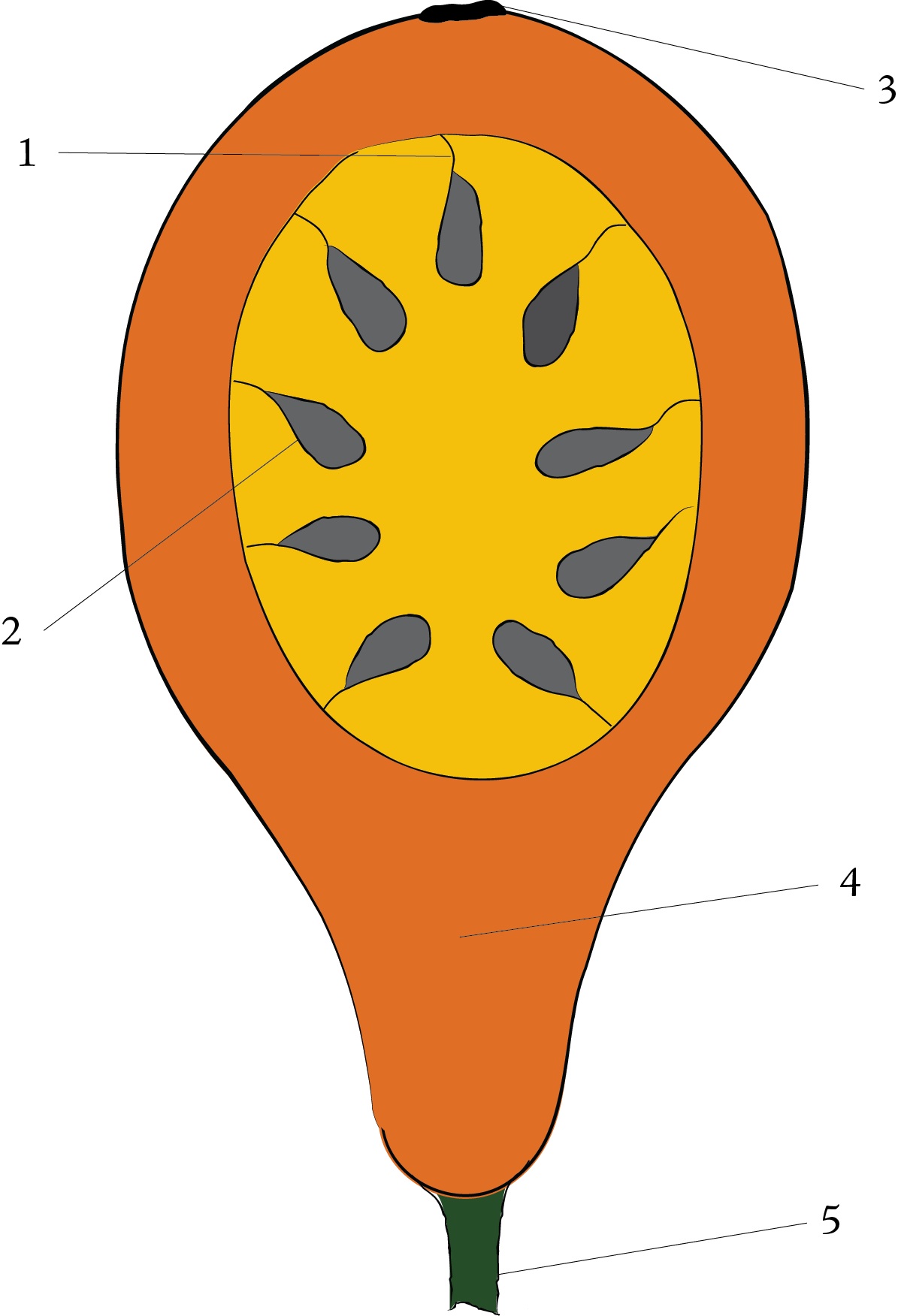Back to August 2014 Newsletter
Botany Basics: What's in a Fruit?

This is the second in a series of three articles on some botany concepts. Watch out for upcoming article on "What's in a Seed." If you missed the article on "What's in a Flower" from the July e-bulletin, you can find it here.
For more information about these and other topics, visit www.seeds.ca/saveyourseeds.
After a flower is pollinated, the ovary grows up. One of its primary roles now is to feed the seeds that are going to live, grow and mature in it. This "seed nursery", which develops from the ovary, is called a fruit. It is very important in the development and dispersal of the seeds.
The more food that’s stored in the seeds, the longer they will last, and the stronger they will sprout.
Parts of the fruit:
(The numbers below correlate with those in the diagram to the right)
- Each seed is attached by an “umbilical cord” that feeds it. (Think of the strings in a halloween pumpkin.)
- The seed coat is part of the fruit. Genetically, the baby plant inside is half of the fruit’s plant (the female part), and half of the plant where the pollen came from (the male part).
- The blossom end is where the stigma was attached. Pollen entered here and each grain travelled to a different seed to make the baby plants.
- Food stored in the fruit continues to feed the seeds even after it’s picked from the plant.
- The stem end is where the base of the flower grew. Nourishment from the plant comes in here, as long as the stem is moist.
So, what really is a fruit?
We call this “seed nursery” a fruit, but what do you call it?
Is a cucumber a fruit?
Is a pepper a fruit?
Is a green bean pod a fruit?
Is rhubarb a fruit?
Is a maple key a fruit?
Is watermelon a fruit?
While in common language we think of "fruits" usually referring to apples, oranges and bananas, from a botanical point of view, bean pods, tomatoes, cucumbers, peppers and even grains are fruits as well. In contrast, the part of the rhubarb plant that we eat is not a fruit at all, but its leaf petiole. Maple keys, whose "wings" develop from the ovary wall, are also fruits.
Pure or Crossed?
Remember that every seed is fertilized by a different grain of pollen, so if they’re cross-pollinated, you can’t tell by testing one seed. In most plants the seed coat is part of the fruit, not the baby, so you can’t tell crosses by looking at the seed colour either.
If the fruit isn’t fully pollinated, it won’t fully grow.
Have you ever seen:
A strawberry, cucumber, ear of corn or a bean or pea pod that looked like the ones in this picture?

The seeds that didn’t get any pollen failed to grow, and the fruit didn’t grow around them because it wasn’t needed.
Not yet a member?
An annual membership to Seeds of Diversity gives you access to our seed exchange, seed grow-out programs, and our online news.

We depend on donations to do our work.

Thank you for your support!
